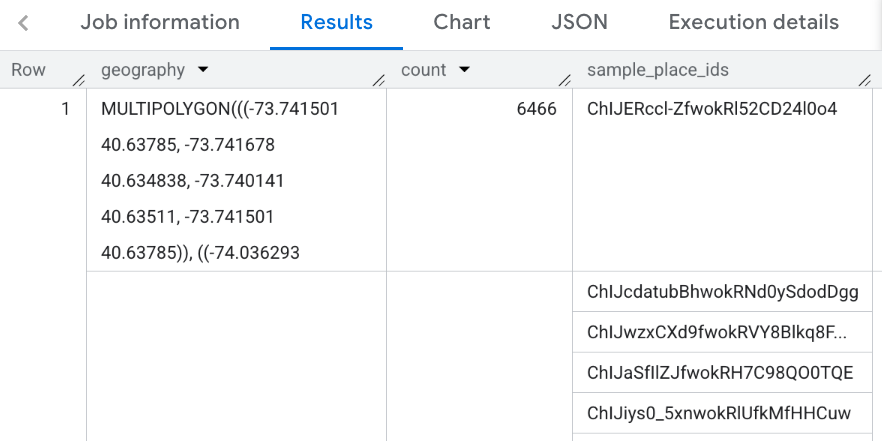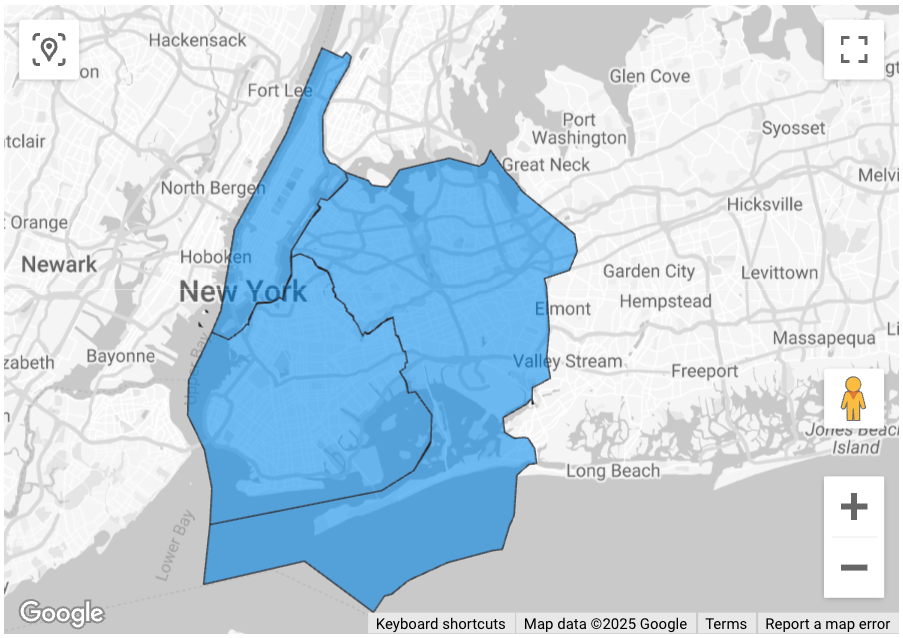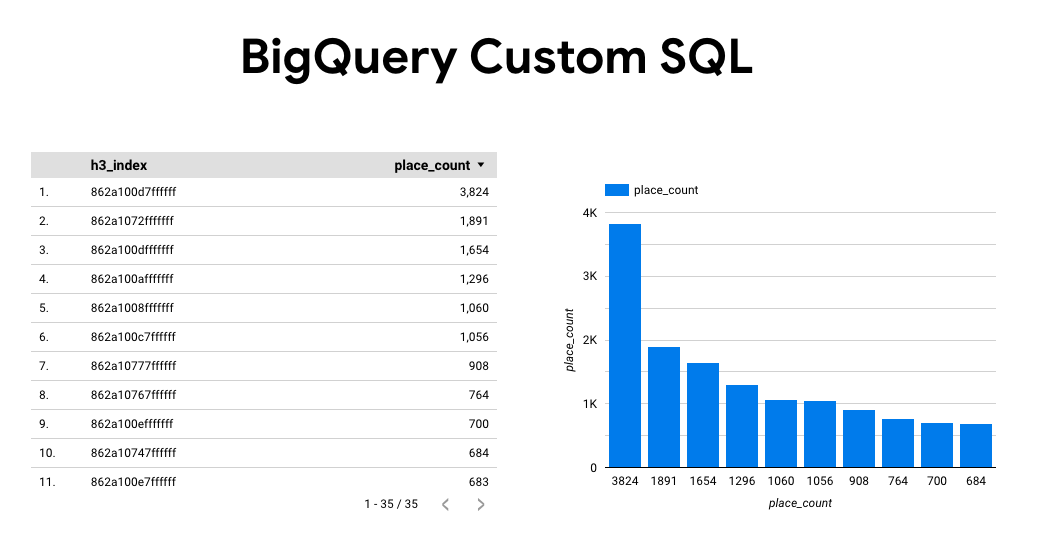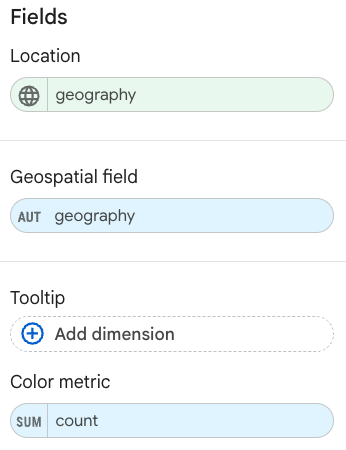تابع PLACES_COUNT_PER_GEO آرایه ای از مناطق جغرافیایی را برای جستجو می گیرد و جدولی از تعداد مکان ها در هر منطقه را برمی گرداند. به عنوان مثال، اگر آرایه ای از کدهای پستی را به عنوان منطقه جستجو مشخص کنید، پاسخ حاوی یک جدول با یک ردیف جداگانه برای هر کد پستی است.
از آنجا که تابع PLACES_COUNT_PER_GEO یک جدول را برمی گرداند، آن را با استفاده از یک عبارت FROM فراخوانی کنید.
پارامترهای ورودی:
مورد نیاز : پارامتر فیلتر
geographiesکه ناحیه جستجو را مشخص می کند. پارامترgeographiesآرایه ای از مقادیر تعریف شده توسط نوع داده BigQueryGEOGRAPHYرا می گیرد که از نقاط، رشته های خط و چند ضلعی ها پشتیبانی می کند.اختیاری : پارامترهای فیلتر اضافی برای اصلاح جستجوی شما.
برمی گرداند:
- جدولی با یک ردیف در هر منطقه جغرافیایی. این جدول شامل ستونهای
geography(GEOGRAPHY)،count(INT64) وplace_ids(ARRAY<STRING>) است کهplace_idsحاوی حداکثر 250 شناسه مکان برای هر منطقه جغرافیایی است.
- جدولی با یک ردیف در هر منطقه جغرافیایی. این جدول شامل ستونهای
مثال: تعداد رستوران های هر شهرستان نیویورک را محاسبه کنید
این مثال جدولی از تعداد رستوران های عملیاتی در هر شهرستان در شهر نیویورک ایجاد می کند.
این مثال از مجموعه داده عمومی BigQuery اداره آمار ایالات متحده برای بدست آوردن مرزهای سه شهرستان در شهر نیویورک استفاده می کند: "Queens"، "Kings"، "New York". مرزهای هر شهرستان در ستون county_geom قرار دارد.
سپس این مثال از تابع BigQuery ST_SIMPLIFY برای برگرداندن نسخه ساده شده county_geom استفاده می کند. تابع ST_SIMPLIFY زنجیره های تقریبا مستقیم لبه ها را با یک لبه بلند جایگزین می کند.
DECLARE geos ARRAY<GEOGRAPHY>; SET geos = (SELECT ARRAY_AGG(ST_SIMPLIFY(county_geom, 100)) FROM `bigquery-public-data.geo_us_boundaries.counties` WHERE county_name IN ("Queens","Kings", "New York") AND state_fips_code = "36"); SELECT * FROM `PROJECT_NAME.places_insights___us.PLACES_COUNT_PER_GEO`( JSON_OBJECT( 'geographies', geos, 'types', ["restaurant"], 'business_status', ["OPERATIONAL"] ) );
پاسخ برای تابع:

نتایج را تجسم کنید
تصاویر زیر این داده ها را در استودیو Looker به عنوان یک نقشه پر شده نشان می دهد که شامل طرح کلی هر شهرستان می شود:

برای وارد کردن داده های خود به Looker Studio:
برای ایجاد نتایج تابع بالا را اجرا کنید.
در نتایج BigQuery، روی Open in -> Looker Studio کلیک کنید. نتایج شما به طور خودکار به Looker Studio وارد می شود.
Looker Studio یک صفحه گزارش پیشفرض ایجاد میکند و آن را با عنوان، جدول و نمودار میلهای از نتایج مقداردهی میکند.

همه موارد موجود در صفحه را انتخاب کرده و حذف کنید.
روی Insert -> Filled map کلیک کنید تا یک نقشه پر شده به گزارش شما اضافه شود.
در قسمت Chart Types -> Setup فیلدها را مطابق شکل زیر پیکربندی کنید:

نقشه پر شده مانند بالا ظاهر می شود. برای پیکربندی بیشتر ظاهر نقشه، میتوانید به صورت اختیاری Chart Types -> Styles را انتخاب کنید.
برای اطلاعات بیشتر و مثال در مورد تجسم نتایج Places Insights، به مشاهده نتایج جستجو مراجعه کنید.

